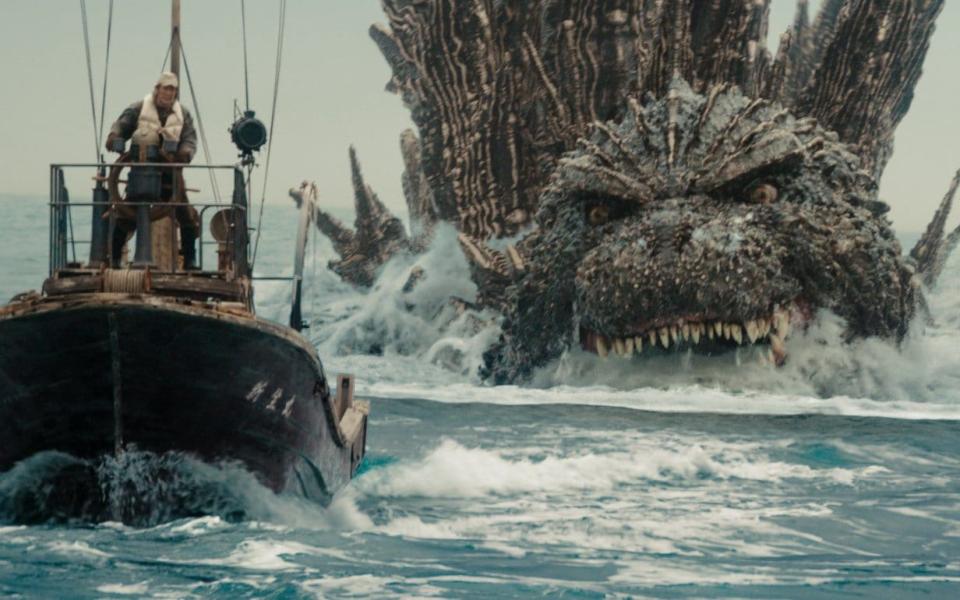Godzilla Minus One: this terrific monster epic should give Hollywood pause

When Godzilla makes an entrance, no-one expects the big lug to quietly slip in at the back. But this time, Toho Studios’ lumbering mascot has done himself proud. With little in the way of advance warning, the latest in a near-70-year string of Japanese Godzilla films has just roared and crunched its way into the record books: last weekend it became the most successful live-action Japanese feature ever to play north American cinemas after 10 days on release. Accordingly, the film’s UK rollout this weekend has been supersized at the last minute to 400 screens – far more than the 17 that showed his last outing, the satirically-inclined Shin Godzilla, in 2017.
Pundits have ascribed the surprise Western success of Godzilla Minus One to a renewed hunger for novelty, now that cinema-goers are tiring of brands such as Marvel and DC. But there’s nothing especially new about Takashi Yamazaki’s film: rather, it hauls Godzilla right back to his post-war nuclear-allegory origins. This avowedly old-fashioned monster movie has far more in common with Ishiro Honda’s 1954 original, and Steven Spielberg’s Jaws, for that matter, than any 21st century visual effects epic. And the fact it was all achieved on a Jaws-like budget – less than $15 million, according to its writer and director, Takashi Yamazaki – should give Hollywood pause.
It opens at the close of the Second World War, with Japan at a desperate ebb. (The ‘Minus One’ of the title refers to the country’s slump below rock bottom at this grim historical moment.) The hero of sorts is Kōichi Shikishima (Ryunosuke Kamiki), an absconded kamikaze pilot whose new job as a minesweeper puts him on the frontline of Tokyo’s efforts to fend off a certain giant amphibious cryptid.
The monster mayhem scenes are obviously the main draw, and they’re terrifically staged, with clean visual effects that look anchored to the real world. And a careful balance is struck between spectacle and horror: during the attack on Tokyo’s newly rebuilt Ginza district, the creature’s atomic breath creates an actual mushroom cloud explosion, causing the crowds to freeze in terror as the series’ founding metaphor short-circuits before their and our eyes.
The moment isn’t just frightening, it’s desperately moving – largely because Yamazaki’s screenplay has subtly framed Shikishima as a stand-in for the nation at large, sloughing off macho Imperial dogma from underneath a suffocating shroud of survivor’s guilt. Tellingly, the day is saved in the end not by the military or government, but a coalition of civic groups and private enterprise, setting the tone for the prosperous half-century ahead. Never mind beauty: it was neoliberalism killed the beast.
12A cert, 124 mins

 Yahoo Sports
Yahoo Sports 